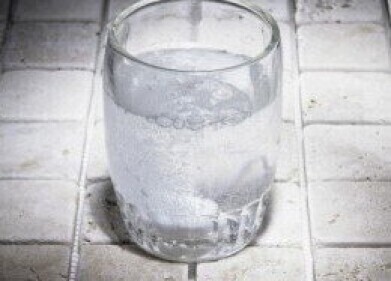PFAS in water
Where Do PFAS Actually Come From?
May 23 2021
In recent years, there has been a growing awareness in mainstream media and among the general populace of the prevalence and possible dangers of PFAS. Often dubbed “forever chemicals”, these manmade substances almost reach 5,000 in number and more are being developed by industry all the time.
They’re used for a wide variety of purposes and can persist for an incredibly long time in our atmosphere, meaning they’re almost ubiquitous in our natural environment. But where exactly do perfluoroalkyl and polyfluoroalkyl substances (to give them their full title) come from? How are they made? And why? Read on to find out the answers to these questions and more.
Where do PFAS come from?
Although there are currently more than 4,700 PFAS in existence, they all share the same molecular structure. Namely, this consists of a bond between carbon and fluorine, which is one of the strongest known to science. It’s for this reason that PFAS can endure for so long in the environment without degrading, resist the filtration techniques used at wastewater treatment plants and accumulate in our atmosphere.
Generally speaking, PFAS are divided into two types: polymer and non-polymer PFAS. The former are comprised of molecules with more than 12 carbon atoms in their makeup, while the latter generally consist of between three and 12 carbon atoms alongside the fluorine element. However, there are no PFAS that occur naturally in their environment. Their completely synthetic nature is one reason why the scientific community is concerned about the long-term ramifications of their widespread production and use.
Why are PFAS made?
If PFAS aren’t naturally occurring, why do we need them? The chemicals were initially developed in the 1940s and have been put to a wide variety of uses in the intervening decades. Today, they’re found in all kinds of household products, including non-stick pots and pans, stain-resistant clothing, upholstery and other textiles, food packaging, cosmetic products, paints and waxes. They’re also used for more specialist purposes, such as the foam used to put out flames in fire extinguishers.
The versatility and usefulness of PFAS means that they have been employed far and wide by businesses and individuals all over the world. Unfortunately, it took some time for the scientific community to realise just how long PFAS persist in the environment and how easily they can travel through it, meaning that today, they have contaminated a significant proportion of the natural world.
PFAS contamination
Due to their widespread use and millennia-long lifespans, PFAS are almost ubiquitous today. They have infiltrated the soil we grow our crops in and the waterways we depend upon for irrigation. They are present in the air we breathe and the food we consume. Perhaps most concerningly of all, they’ve been found in water supplies used for drinking water.
Although the long-term effects of drinking PFAS-contaminated water are not yet fully known, the fact that these chemicals can persist and accumulate in the human body is a big cause for concern, especially since preliminary research has linked them with a whole host of health problems. For that reason, it’s important to regularly test drinking water supplies to determine PFAS concentrations. For those interested in this subject, the article Screening technique for Adsorbable Organic Fluoride (AOF) concentrations with the Xprep C-IC contains a wealth of interesting information about the latest developments in the field.
Digital Edition
IET 35.2 March
April 2025
Air Monitoring - Probe Sampling in Hazardous Areas Under Extreme Conditions - New, Game-Changing Sensor for Methane Emissions - Blue Sky Thinking: a 50-year Retrospective on Technological Prog...
View all digital editions
Events
May 06 2025 Nuremberg, Germany
May 10 2025 Karachi, Pakistan
May 11 2025 Vienna, Austria
May 11 2025 Seoul, South Korea
Salon Analyse Industrielle & Instrumentation
May 14 2025 Paris, France







_(4427399123)-(2).jpg)











